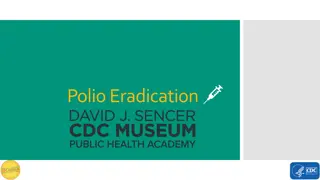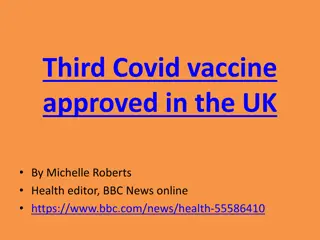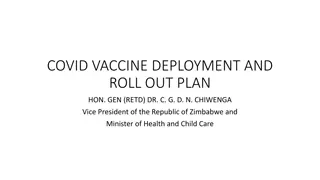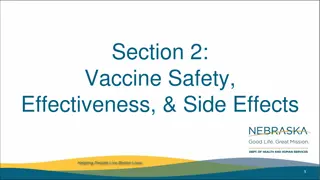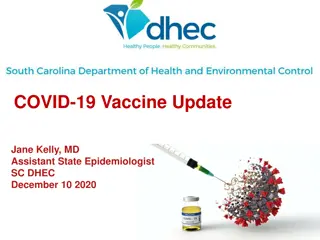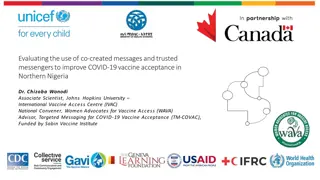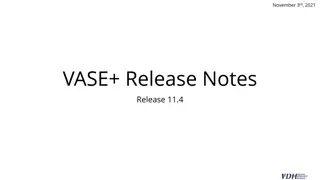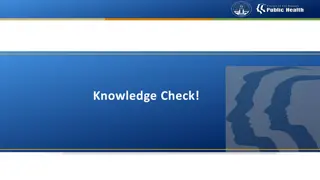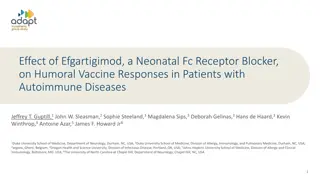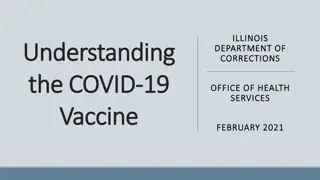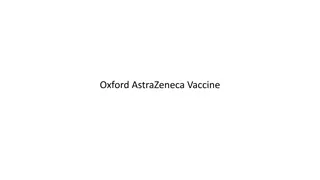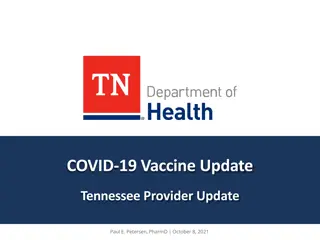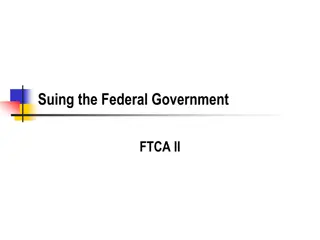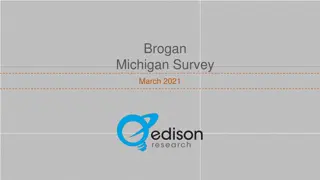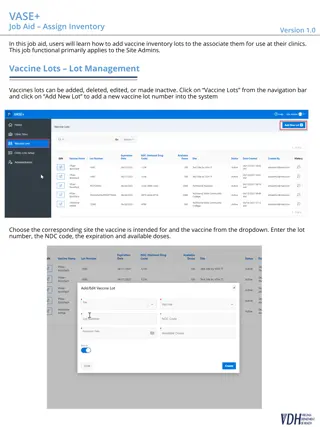Key Takeaways from KFF COVID-19 Vaccine Monitor April 2021
Vaccine confidence has increased among the public as more people see friends and family members vaccinated. Demographics show varying attitudes towards COVID-19 vaccines, with concerns including access and misinformation. Health care providers are trusted messengers for vaccine information, especially as national public health trust declines.
Download Presentation

Please find below an Image/Link to download the presentation.
The content on the website is provided AS IS for your information and personal use only. It may not be sold, licensed, or shared on other websites without obtaining consent from the author. Download presentation by click this link. If you encounter any issues during the download, it is possible that the publisher has removed the file from their server.
E N D
Presentation Transcript
6 Key Takeaways from the KFF COVID-19 Vaccine Monitor April 2021
1. Vaccine confidence has increased as more people have seen their friends and family members get vaccinated As of March, a majority the public has either already gotten vaccinated or is ready to get the vaccine as soon as they can. With a small but persistent group opposed to getting the vaccine and many others still on the fence, the U.S. may soon hit a point where vaccine supply exceeds demand. NOTE: December 2020 survey did not have an option for respondents to indicate they had already been vaccinated. SOURCE: KFF COVID-19 Vaccine Monitor. See topline for full question wording.
2. No group is monolithic in their attitudes towards the COVID-19 vaccines In every demographic segment there are large shares of people who are ready to get the vaccine, others who are in wait and see mode, and some who are more resistant. Certain demographics (e.g., Republicans) have larger shares saying they don t intend to get vaccinated and others (e.g., Black adults) have larger shares saying they want to wait and see, but majorities across all demographics are at least somewhat open to getting the vaccine. 1% 3%5% 3% 5% SOURCE: KFF COVID-19 Vaccine Monitor (March 15-22, 2021). See topline for full question wording.
3. People have a range of questions and concerns about the vaccine that require different strategies to address Other concerns reflect issues with vaccine access, including needing to take time off work due to vaccine side effects, issues with transportation, or concern about not being able to get the vaccine from a trusted place Some concerns reflect a lack of access to accurate information, including concerns about getting COVID-19 from the vaccine (which is not possible) or having to pay out-of- pocket (when in fact, vaccination is free). NOTE: Among those who have not been vaccinated for COVID-19 and do not want to get the vaccine as soon as possible. SOURCE: KFF COVID-19 Vaccine Monitor (March 15-22, 2021). See topline for full question wording.
4. Individual health care providers are the most trusted messengers when it comes to information about the COVID-19 vaccines With trust in national public health messengers eroding and becoming increasingly partisan over the past year, local doctors, nurses, health care providers, and other trusted community figures have an important role to play in supplementing national campaigns to increase COVID-19 vaccine confidence and uptake. 6% 11% NOTE: Among those who have not been vaccinated against COVID-19. SOURCE: KFF COVID-19 Vaccine Monitor (conducted Jan. 11-18, 2021). See topline for full question wording.
5. It is too early to know what effect the pause in distribution of the Johnson & Johnson vaccine will have on vaccine confidence Potential vaccine side effects are a top concern, so if the public perceives blood clots as a side effect (regardless of whether a link is proven), this news has the potential to increase concerns about getting the Johnson & Johnson vaccine. Prior to this announcement, the one-shot vaccine was an appealing option for a large share of those in the wait and see group. NOTE: Among those who say they want to wait and see how it is working for others before getting vaccinated for COVID-19 SOURCE: KFF COVID-19 Vaccine Monitor (March 15-22, 2021). See topline for full question wording
6. Messages about the vaccines effectiveness work best with the wait and see group Even in the face of the public s questions about the potential link between the Johnson & Johnson vaccine and rare blood clots, messages about the effectiveness of the existing vaccine options at preventing serious illness and death from COVID-19 are likely to be the most effective at bolstering confidence among those who are on the fence about getting the vaccine. NOTE: Based on those who want to wait and see before getting vaccinated for COVID-19. SOURCE: KFF COVID-19 Vaccine Monitor (March 15-22, 2021). See topline for full question wording.



